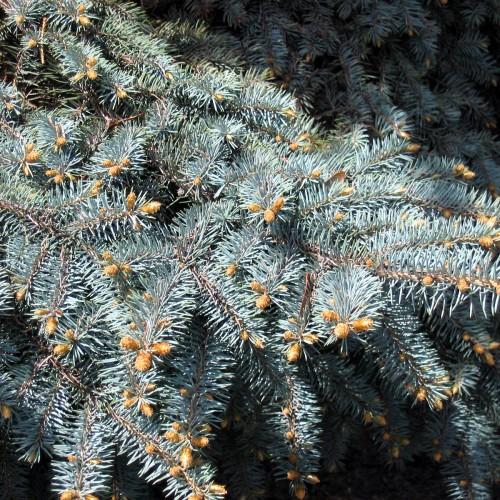
Colorado blue spruce
Picea pungens f. glauca
Also Known As - Colorado spruceCycle:
Perennial
Watering:
Frequent
Hardiness Zone:
6
Flowers:
Flowers In Spring
Sun:
Full sun
Cones:
Yes
Leaf:
Yes
Growth Rate:
High
Drought Tolerant:
Yes
Care Level:
Moderate
watering
Meyer's spruce seedlings should be watered deeply once per week, allowing the soil to become slightly dry between waterings. Aim to keep the soil lightly moist. Avoid overwatering, which can lead to root rot. During the first months of growth, allow the soil to dry out more completely between waterings, but do not allow it to dry out completely or become soggy.
sunlight
Meyer's spruce (Picea meyeri) seedlings need at least 6 hours of full sunlight each day for optimal growth. They particularly do best when they receive sunlight in the early parts of the day, from the morning till lunchtime. While Meyer's spruce seedlings can tolerate some shade, it would be beneficial to provide them with direct sunlight throughout the day to facilitate their healthy development. It is also important to ensure that the seedlings are planted in an area that is shielded from extreme weather conditions like strong winds or heavy rains.
pruning
Meyer's spruce seedlings should be pruned in late spring or early summer shortly after the new growth has appeared. Pruning should be limited to removing dead or damaged branches. The main goal of pruning is to promotes a natural shape and size, and to retain the aesthetics of the tree. Careful pruning can help to reduce the amount of maintenance required in the future, as well as aiding in the health of the tree. If pruning is necessary for corrective purposes, it should be done carefully and only in the areas needed. Generally, only light pruning is required.
